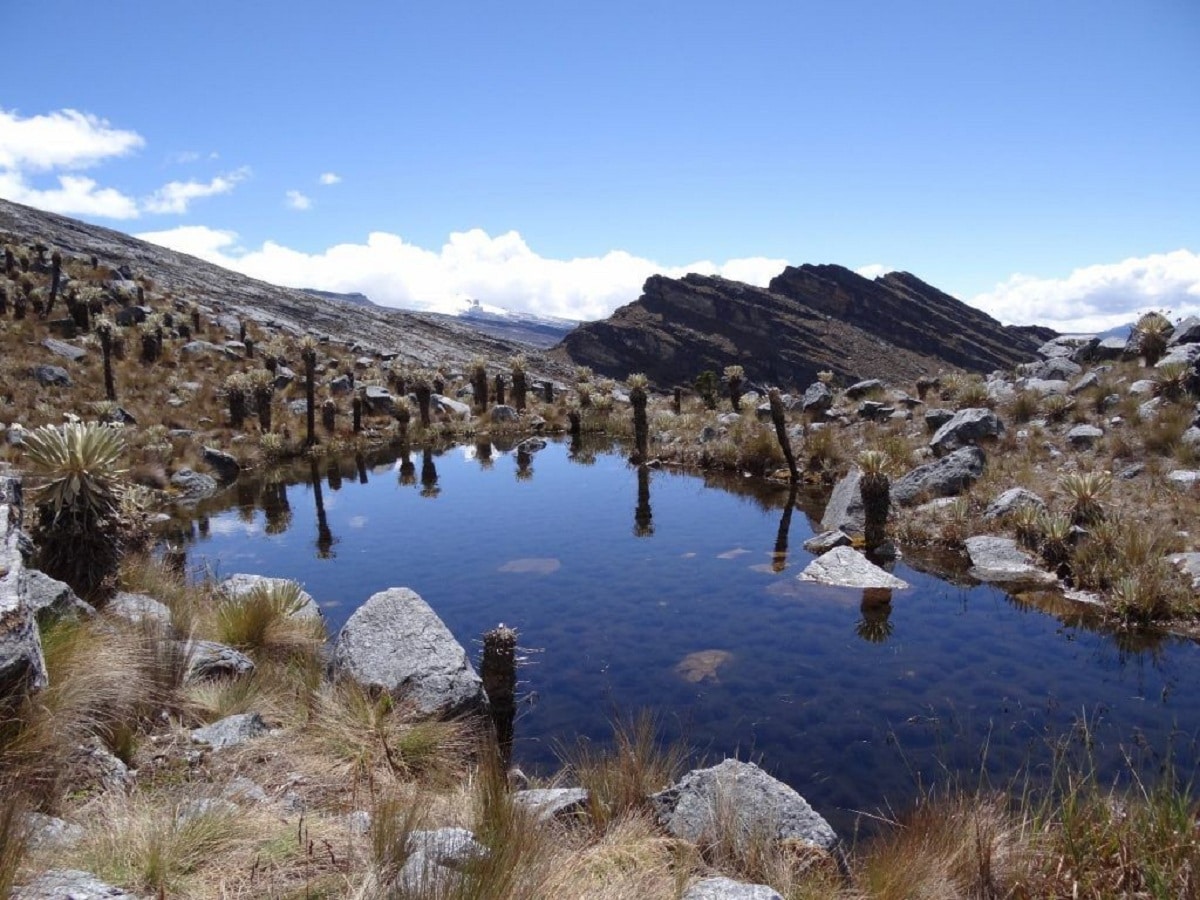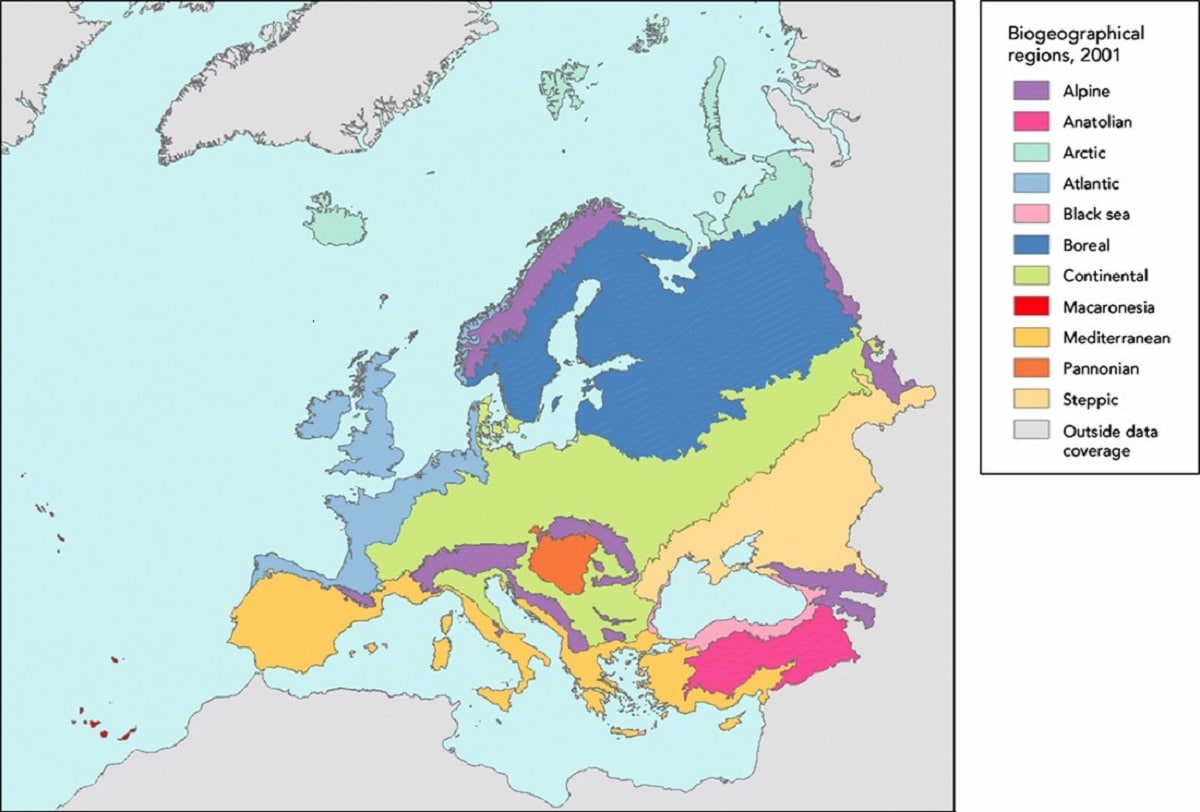
In the field of botanical meteorology, the thermal floors to divide the different strips that are defined by the altitude in a mountain where temperature variations and other elements of the climate occur. The determining climatic factor is altitude above sea level and the main meteorological variable that is affected by this attitude is temperature.
In this article we are going to tell you all the characteristics and importance of thermal floors.
Key features

Ceramic floors are defined as the climatic variations that occur in mountainous areas. Relief also affects precipitation, since moisture-laden winds collide with mountains and tend to rise. Thermal floors are usually much more appreciated in the intertropical zone, while in temperate zones they are poorly defined. This is due to the fact that the temperature in temperate and cold zones are more affected by the annual variations in solar radiation.
If we analyze the context, we see that there are different variations in altitude and they are what define the significant variations in temperature. This is how at least 5 thermal floors are established, the lowest being the warm floor and then the temperate, cold, moor and icy floors. For each of the floors, an amplitude in the variation of the temperature height is determined, as well as other associated characteristics.
The differentiation of the thermal floors originates fundamentally from the temperature range clearly located in the intertropical zone. In the temperate zone, the temperature decreases with altitude, but it is not such a marked effect. This is because in temperate zones there are other factors that are more determining, such as latitude. Latitude is one of the variables that is influenced by the solar radiation it receives depending on the orientation of the slope. In the part of the tropics it is almost a report of the solar radiation that arrives and the incidence of winds and rains.
Thermal floors, temperature and altitude

Temperature and latitude are the main variables that define the different thermal floors. The air heats up due to the re-election that reaches the ground and the hot air decreases intensity, therefore, being lighter, it tends to rise. The average temperature usually decreases between 0.65 and 1 degrees for every 100 meters that the altitude increases.
The mountain and the altitude of each mountain also affect the wind regime and rainfall. This is because if a mountain intervenes in the path of the moisture-laden winds, they ascend and end up precipitating in the highest part of the mountain. If the altitude of the mountain is high, the winds cool and the humidity condenses at altitude to cause precipitation. In the high mountains, the feeds usually managed to discharge the moisture in the windward zone and in the leeward slope it is usually drier.
Latitude is the position of an area with respect to the Equator and affects the thermal floors in the incidence of solar radiation throughout the year. From the latitude we find that the way in which solar radiation influences the intertropical strip is uniform. It does not matter in which position it is around the sun, since the tropical zone always receives its radiation. On the other hand, we have that, at higher latitudes, this does not happen. It is due to the inclination of the earth's axis that the sun's rays strike in an inclined way and the altitude does not substantially alter the temperature, since there is less solar radiation.
Types of thermal floors

There are approximately 5-6 types of thermal floors in the intertropical zone. The fundamental difference of these floors in is the temperature. Let's see what are the different types that exist:
Warm thermal floor
It is one that presents high temperatures in the range of 28 degrees on average at its low limit and 24 degrees at an altitude of 900-1000 meters above sea level. In this thermal floor the ecosystems of tropical rain forest, deciduous forests, savannas and some of the arid and semi-arid areas of the world are presented. In the lower part of the areas located in Ecuador, large amounts of rain are received due to the conference of humid winds from both hemispheres.
Premontane thermal floor
It is also known by the name of semi-warm floor includes the areas located between 900-1700 meters above sea level. It reaches an average temperatures of 18-24 degrees. Here are the low mountain cloud forests and orographic rain takes place. This rain is due to those ascending air masses that condense forming clouds and producing rain.
Tempered thermal floor
It is also known by the name of mesothermal. The areas of between 1000-2000 meters above sea level. Its average temperature is around 15-18 degrees, reaching 24 degrees in some areas. In these latitudes the high cloud forest is formed and in subtropical latitudes the coniferous forests. Here there is also the phenomenon of orographic rain in horizontal rains.
Cold thermal floor
It is also known by the name of microthermal. It is a floor where low temperatures predominate, on average about 15-17 to 8 degrees. They are usually at altitudes between 2000-3400 meters above sea level. Here the limit of trees is reached, so it is the maximum height for this type of life form to develop. Only species that are adapted to these climates can develop.
Moor floor
It is that thermal strip that is between 3400-3800 meters above sea level and temperatures drop from 12-8 to 0 degrees. Nighttime temperatures reach freezing point and even present precipitation in the form of snow. In some cases there is enough rainfall, but in most the availability of water is a limitation.
It usually occurs mainly in the highest and driest areas since the arriving winds have discharged all their humidity on the road.
Icy floor
It is usually located between 4.000-4.800 meters above sea level and corresponds to the zone of perpetual snow. Here the precipitations are in the form of snow and the low temperatures prevent their melting, damming the solar region in large quantities.
I hope that with this information you can learn more about thermal floors and their characteristics.